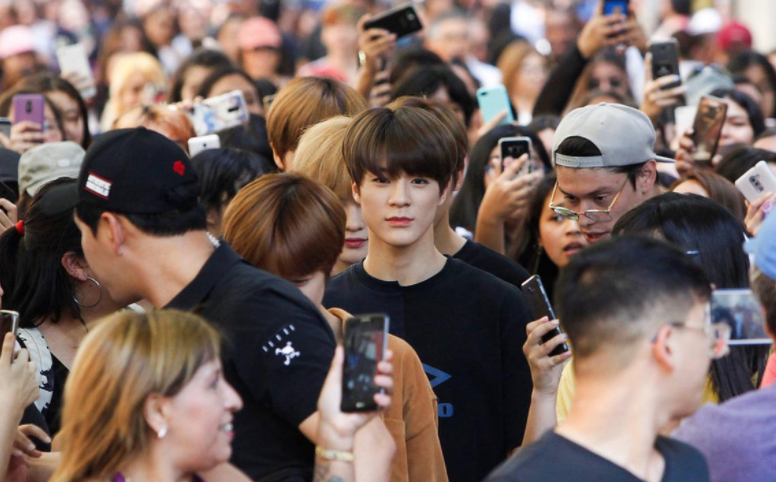During the 2020 and 2021 social protests in Chile, Colombia, and Peru, Latin American fans of K-pop, Korean popular music and culture that mixes rhythms, styles, dance routines and has a defined aesthetic, went from using social networks to support their favorite artists to using them to sabotage the hashtags of conservative influencers that discredited the mobilizations. Through coordinated actions, young people managed to mock and minimize the political content in favor of Sebastián Piñera, Manuel Merino, and Uribismo. They did so by massively posting fancams, i.e. GIFs, images, and memes of their Korean artists.
This coordinated participation, known as slacktivism or cyberactivism, is characterized by the use of technology, especially the Internet, to express dissatisfaction about specific issues. For some specialists, this is not a true form of participation, but rather a set of actions that are facilitated by the dynamics of the network, since there is no “real” involvement or impact on the political life of the countries in question.
But the truth is that the actions of the “k-popers” on Twitter surprised the affected Latin American governments, which, in their ignorance, acted with a certain lightness and exaggeration, even labeling the initiatives as cyber-terrorism sponsored by the international radical left. This provoked ridicule and made evident the distance between traditional politics and these emerging forms of social action.
Twitter, fandom, and fanbase in Latin America
Twitter, and recently Tik-Tok, are par excellence the social networks of K-pop and are one that their followers have used to support their favorite artists. This highly coordinated global community has come to develop a lingo to communicate and coordinate virtual actions, whether for voting for awards such as the Asian Artist Awards, the birthday of their idols, or to make a music release viral.
Usually, each K-pop music group , BTS and NTC being the most popular, has its own fan group or fandom. The BTS fandom is known as ARMY (Adorable Representative M.C. for Youth) and has a set of Twitter accounts called “Fanbase” that are organized geographically and have thousands of followers. In Latin America there are a significant number of accounts in countries such as Chile, Colombia or Peru, although the Peruvian account was recently suspended.
These fandoms are characterized by manipulating the algorithms of the social networks in their favor, and they do so basically through three recurring actions. Firstly, fandoms organize themselves annually so that their favorite groups win in the voting for music awards. This global dynamic, known as “figthing” or battle, is highly competitive and started in 2016 with the Asian Artist Award. It became popular in the West with the American Music Award or the Billboard Music Award, where the band with the most votes on Twitter or on the official website is awarded.
The second action K-popers resort to is the “Streaming or listening party.” Prior to the release of a new song or album, the fanbase instructs to their followers, in their own jargon, a day and time for each fan to post a photo with the hashtag and the photo of the song they are playing, and, thus, making the music a global trend.
And the third action, known as “cleaning hashtags,” is a tactic to counter content posted on Twitter that seeks to discredit K-pop. Such content is always accompanied by hashtags that say negative things about its artists. In response, the fandom initiates the cleanup of these posts by identifying these hashtags and then employing them to their advantage, i.e., slightly changing their form and content and including fancams in them. Once these actions have been carried out, they are published on a massive scale. As a result, the malicious content becomes spam due to its high volume of publications, in addition to being simultaneously denounced by the same K-popers. As a result, this makes it eventually disappear as a suggested topic on the platform.
As can be seen, these virtual behaviors require a high level of coordination, time, and commitment. A clear example of this was the “hashtag cleaning” employed by Latin American K-popers during their participation in the protests. Once these fans identified conservative hashtags, they modified them with fancams, posted them en masse, and denounced them for spamming. However, for this to happen, this content, which was originally labeled “political” by Twitter, had to change. To do so, they plagued it with fancams of their favorite artists, quickly changing its categorization to “entertainment” or “K-pop”. Once this was done, it was only a matter of time before it became spam, thus reducing its impact drastically.
This is what happened in Chile, Colombia and Peru during the protests even though none of these are among the top countries producing K-pop content. However, according to the head of global K-pop partnerships and Kcontent, Yeon Jeong, several Latin American countries have a large fan base. Brazil ranks first in the region and sixth globally in terms of most active Twitter accounts. It is followed by Mexico in eighth place in the world, Argentina in twelfth place, Peru in nineteenth place, and Colombia in twentieth place.
The actions carried out in the three countries by K-popers is not cyberterrorism. In fact, if we consider that this industry dominates the global conversation on Twitter with an output of 7.5 billion trills in 2020, surpassing topics such as Covid-19, the climate crisis, and social unrest, it is clear that what happened in the protests was only a small sample of the impactc that these mobilizations can have.
Translated from Spanish by Alek Langford













